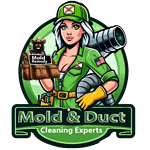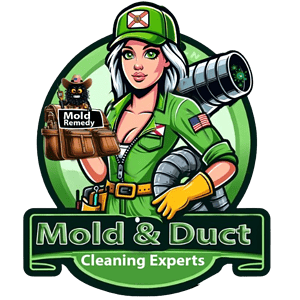Yes, sunlight can effectively inhibit mold growth and kill mold spores due to its UV rays.
However, it’s a bit more complicated to answer. To find out that why is it tricky we have to first know about mold.
What is Mold and Why Should We Be Concerned?
Mold is a type of fungus that can grow indoors and outdoors, thriving in warm, damp, and humid conditions. It reproduces through spores that can be found in the air and on surfaces. When mold grows in homes, it can cause structural damage and pose health risks, especially to those with allergies or respiratory issues. Common areas where mold can thrive include bathrooms, kitchens, basements, and anywhere with moisture problems.
How Does Sunlight Kill Mold?
Sunlight plays a vital role in mold prevention due to its unique properties. Let’s dig into the science behind how sunlight affects mold growth:
UV Rays and Mold Reproduction
Ultraviolet (UV) rays from sunlight can penetrate the cell walls of mold spores, disrupting their DNA and preventing them from reproducing. When mold spores are exposed to UV light, their ability to divide and form new colonies is significantly reduced. This makes sunlight an effective natural mold deterrent.
Not all molds respond equally to sunlight. Some are more sensitive to UV rays than others. For example:
- Aspergillus and Penicillium spores are relatively more sensitive to UV light.
- Stachybotrys chartarum (black mold) is less affected by sunlight due to its thicker cell walls and protective pigments.
However, even black mold can be weakened by prolonged exposure to sunlight.
Indoor vs. Outdoor Sunlight
Indoor sunlight is less intense than direct outdoor sunlight. Windows and other barriers filter out some UV rays. Placing mold-infested items outdoors under direct sunlight can be more effective than relying solely on indoor light. Furthermore, exposure to sunlight can also affect the growth and reproduction of mold. The longer the exposure to sunlight, the greater the impact on mold. Consistent exposure over several hours or days can significantly reduce mold viability.
Limitations
- Sunlight alone may not completely eradicate mold. It’s most effective as part of a comprehensive mold prevention strategy.
- Mold can still thrive in hidden or shaded areas where sunlight doesn’t reach.
- Additionally, if the underlying moisture issue isn’t addressed, mold will likely return.
Can Sunlight Really Kill Mold?
Sunlight can indeed weaken and reduce the viability of mold spores. UV rays disrupt the DNA of spores, preventing them from reproducing. However, complete eradication depends on factors like exposure duration, mold type, and the specific conditions.
Situations Where Sunlight Helps
- Surface Mold: Sunlight is most effective against surface mold. If you have moldy items like clothing, cushions, or curtains, placing them outdoors in direct sunlight can help.
- Drying Out Moisture: Sunlight aids in drying out damp areas. Mold thrives in moisture, so sunlight helps reduce the conducive environment.
- Ventilation: Sunlight exposure often goes hand in hand with ventilation. Opening windows and allowing fresh air and sunlight into rooms can discourage mold growth.
Limitations
- Hidden Areas: Sunlight can’t reach hidden or shaded spots where mold might be lurking (e.g., behind walls, under carpets).
- Deeply Embedded Mold: Mold that has penetrated porous materials (like wood or drywall) won’t be fully eradicated by sunlight alone.
- Recurring Mold: Without addressing the underlying moisture issue, mold will likely return even after sunlight exposure.
Balancing Sunlight and Preventive Measures
- Rotate Items: Regularly rotate and expose mold-prone items (such as mattresses, rugs, and cushions) to sunlight.
- Inspect Dark Corners: Check hidden areas periodically. If you suspect mold, consider professional inspection.
- Combine Strategies: Use sunlight alongside other mold-fighting techniques (discussed later) for comprehensive prevention.
Practical Tips for Using Sunlight to Combat Mold
Utilizing sunlight effectively can significantly contribute to mold prevention. Here are practical tips for utilizing sunlight to prevent mold:
Tip1: Rotate Mold-Prone Items
Regularly rotate items that are susceptible to mold growth. These include mattresses, rugs, cushions, and curtains. Place these items outdoors in direct sunlight. Sunlight not only inhibits mold but also helps dry out any residual moisture.
Tip2: Inspect Hidden Areas
While sunlight is powerful, it can’t reach every nook and cranny. Inspect hidden corners, especially those prone to dampness. Check behind walls, under carpets, and inside closets. If you suspect mold, take further action.
Tip3: Ventilation and Sunlight
Combine sunlight exposure with proper ventilation. Open windows to allow fresh air and sunlight into your living spaces. Ventilation helps prevent stagnant air and creates an environment less conducive to mold growth.
Tip4: Outdoor Exposure
For mold-infested items like clothing, shoes, or bags, consider placing them outdoors on a sunny day. Outdoor sunlight is more intense than indoor light, enhancing its mold-inhibiting effects.
Tip5: Precautions
Be cautious when exposing delicate items (such as fabrics or artwork) to direct sunlight. Prolonged exposure may cause fading or damage. Monitor the weather—avoid exposing items during rain or high humidity.
Alternative Mold Remediation Strategies
When considering professional mold removal services, it’s important to assess the extent of the mold infestation. If the area affected by mold is larger than ten square feet, or if the mold is in the HVAC system, it’s time to call in the professionals.
DIY mold cleaning solutions can be effective for small areas. Solutions like diluted bleach, vinegar, or baking soda can kill mold on non-porous surfaces. However, they may not be effective against mold embedded in porous materials.
Preventative measures include controlling humidity levels, ensuring proper ventilation, fixing leaks promptly, and using mold-resistant products in high-moisture areas.
Combining Sunlight with Other Mold-Fighting Techniques
To enhance the mold-killing power of sunlight, combine it with thorough cleaning and the use of natural anti-mold agents like tea tree oil or grapefruit seed extract. Sunlight’s UV rays help to kill mold spores, but it’s not always enough on its own.
- Maximize exposure: Ensure that sunlight reaches the mold-infected areas directly. Trim any outdoor foliage that may be blocking windows.
- Use reflective surfaces: Place mirrors or aluminum foil to reflect sunlight onto moldy areas that are not directly exposed to sunlight.
- Dry the area: Sunlight helps to dry out damp areas, which is crucial because mold thrives in moisture.
Additional steps for complete mold eradication:
- Clean regularly: Sunlight alone won’t prevent mold from returning. Regular cleaning with mold-killing solutions is necessary.
- Improve air circulation: Use fans or open windows to help reduce moisture and prevent mold growth.
- Maintain low humidity: Keep indoor humidity levels below 50% with the help of dehumidifiers.
Facing Mold Issues? Contact Mold & Duct Cleaning Experts for Effective Removal
If you’re facing mold issues at home or suspect mold toxicity might be affecting your health, don’t hesitate to reach out Mold & Duct Cleaning Exoerts. Our professionals have the latest tools and techniques to assess, identify, and effectively remove mold from your home and environment. Don’t let mold compromise your health or comfort any longer. Contact us for a consultation and take the first step towards a cleaner, healthier home. Call us or visit our website to schedule an appointment with our mold and duct cleaning specialists. We’re here to help you breathe easier.

